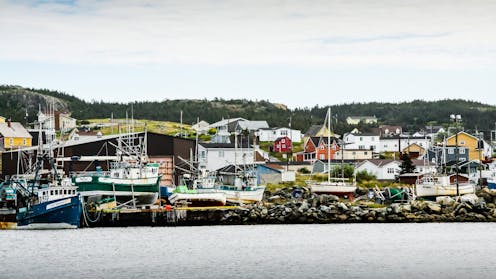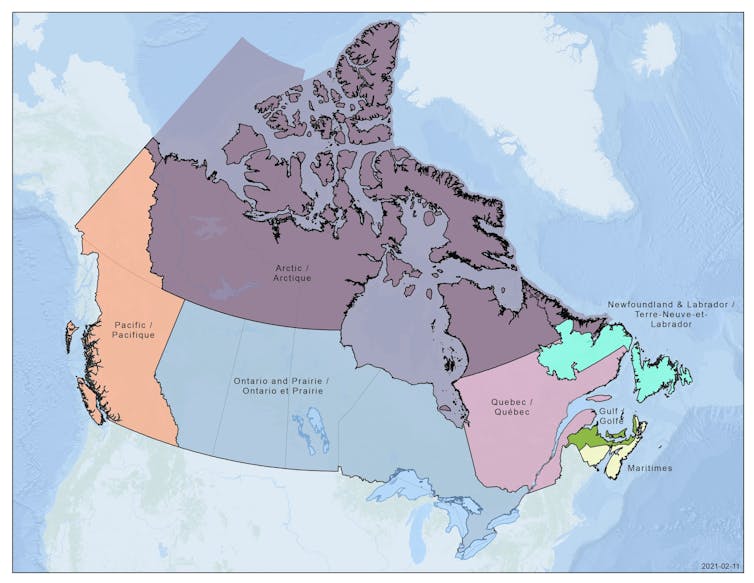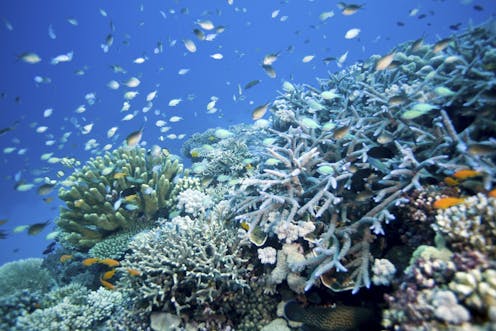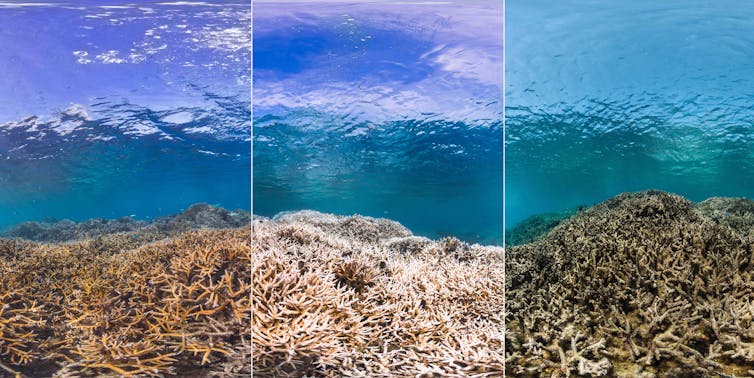Source: The Conversation – Global Perspectives – By Nathan Waddell, Associate Professor in Twentieth-Century Literature, University of Birmingham
George Orwell had a traumatic relationship with the sea. In August 1947, while he was writing Nineteen Eighty-Four (1949) on the island of Jura in the Scottish Hebrides, he went on a fishing trip with his young son, nephew and niece.
Having misread the tidal schedules, on the way back Orwell mistakenly piloted the boat into rough swells. He was pulled into the fringe of the Corryvreckan whirlpool off the coasts of Jura and Scarba. The boat capsized and Orwell and his relatives were thrown overboard.
It was a close call – a fact recorded with characteristic detachment by Orwell in his diary that same evening: “On return journey today ran into the whirlpool & were all nearly drowned.” Though he seems to have taken the experience in his stride, this may have been a trauma response: detachment ensures the ability to persist after a near-death experience.
We don’t know for sure if Nineteen Eighty-Four was influenced by the Corryvreckan incident. But it’s clear that the novel was written by a man fixated on water’s terrifying power.
This article is part of Rethinking the Classics. The stories in this series offer insightful new ways to think about and interpret classic books and artworks. This is the canon – with a twist.
Nineteen Eighty-Four isn’t typically associated with fear of death by water. Yet it’s filled with references to sinking ships, drowning people and the dread of oceanic engulfment. Fear of drowning is a torment that social dissidents might face in Room 101, the torture chamber to which all revolutionaries are sent in the appropriately named totalitarian state of Oceania.
An early sequence in the novel describes a helicopter attack on a ship full of refugees, who are bombed as they fall into the sea. The novel’s protagonist, Winston Smith, has a recurring nightmare in which he dreams of his long-lost mother and sister trapped “in the saloon of a sinking ship, looking up at him through the darkening water”.

National Union of Journalists
The sight of them “drowning deeper every minute” takes Winston back to a culminating moment in his childhood when he stole chocolate from his mother’s hand, possibly condemning his sister to starvation. These watery graves imply that Winston is drowning in guilt.
The “wateriness” of Nineteen Eighty-Four may have another interesting historical source. In his essay My Country Right or Left (1940), Orwell recalls that when he had just become a teenager he read about the “atrocity stories” of the first world war.
Orwell states in this same essay that “nothing in the whole war moved [him] so deeply as the loss of the Titanic had done a few years earlier”, in 1912. What upset Orwell most about the Titanic disaster was that in its final moments it “suddenly up-ended and sank bow foremost, so that the people clinging to the stern were lifted no less than 300 feet into the air before they plunged into the abyss”.
Sinking ships and dying civilisations
Orwell never forgot this image. Something similar to it appears in his novel Keep the Aspidistra Flying (1936) where the idea of a sinking passenger liner evokes the collapse of modern civilisation, just as the Titanic disaster evoked the end of Edwardian industrial confidence two decades beforehand.

Wiki Commons
References to sinking ships and drowning people appear at key moments in many other works by Orwell, too. But did the full impact of the Titanic surface in Nineteen Eighty-Four?
Sinking ships were part of Orwell’s descriptive toolkit. In Nineteen Eighty-Four, a novel driven by memories of unsympathetic water, they convey nightmares. Filled with references to water and liquidity, it’s one of the most aqueous novels Orwell produced, relying for many of its most shocking episodes on imagery of desperate people drowning or facing imminent death on sinking sea craft.
The thought of trapped passengers descending into the depths survives in Winston’s traumatic memories of his mother and sister, who, in the logic of his dreams, are alive inside a sinking ship’s saloon.
Looking for something good? Cut through the noise with a carefully curated selection of the latest releases, live events and exhibitions, straight to your inbox every fortnight, on Fridays. Sign up here.
There’s no way to prove that the Nineteen Eighty-Four is “about” the Titanic disaster, but in the novel, and indeed in Orwell’s wider body of work, there are too many tantalising hints to let the matter rest.
Thinking about fear of death by water takes us into Orwell’s terrors just as it takes us into Winston’s, allowing readers to see the frightened boy inside the adult man and, indeed, inside the author who dreamed up one of the 20th century’s most famous nightmares.
Beyond the canon
As part of the Rethinking the Classics series, we’re asking our experts to recommend a book or artwork that tackles similar themes to the canonical work in question, but isn’t (yet) considered a classic itself. Here is Nathan Waddell’s suggestion:
As soon as the news broke of the Titanic’s sinking, literary works of all shapes and sizes started to appear in tribute to the disaster and its victims. As the century went on, and as research into the tragedy developed (particularly after the ships wreckage was discovered in 1985), more nuanced literary responses to the sinking became possible.
One such response is Beryl Bainbridge’s Whitbread-prize-winning novel Every Man for Himself (1996). It reimagines the disaster from the first-person perspective of an imaginary character, Morgan, the fictional nephew of the historically real financier J. P. Morgan (who was due to sail on the Titanic but changed plans before it sailed).
This article features references to books that have been included for editorial reasons, and may contain links to bookshop.org. If you click on one of the links and go on to buy something from bookshop.org The Conversation UK may earn a commission.
![]()
Nathan Waddell does not work for, consult, own shares in or receive funding from any company or organisation that would benefit from this article, and has disclosed no relevant affiliations beyond their academic appointment.
– ref. Nineteen Eighty-Four might have been inspired by George Orwell’s fear of drowning – https://theconversation.com/nineteen-eighty-four-might-have-been-inspired-by-george-orwells-fear-of-drowning-251289











